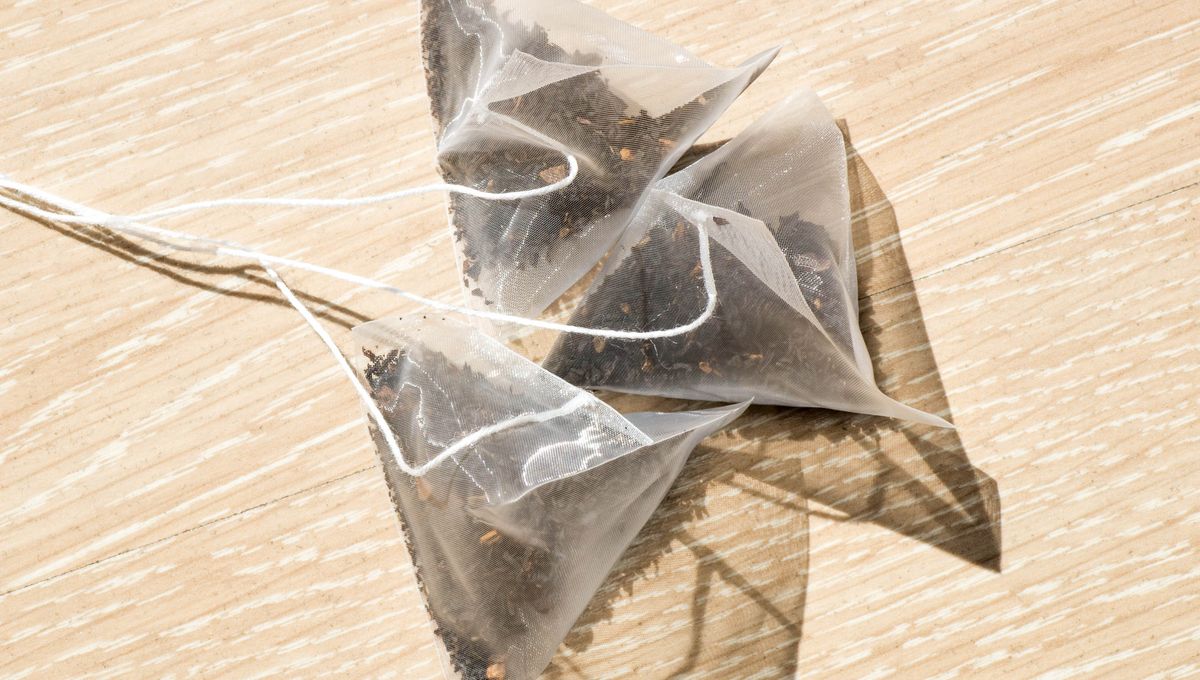
New research has suggested that polymer-based tea bags could release micro- and nanoplastics into the bodies of consumers and the environment – however, the study shows not all tea bags are alike, even from a tiny sample. There’s no need to abandon your comforting cup, which may well be good for your health. On the other hand, the results may influence your chosen tea-delivery mechanism.
Concerns that tea bags could release microplastics along with the flavor of the leaves have been around for a while. Five years ago, a study showed that the bags released billions of plastic particles when steeped in near-boiling point water, even when empty. The researchers also found water fleas exposed to the microplastics developed some anatomical and behavioral abnormalities. Concern about microplastics in the environment has risen since then, although their health effects in humans are still debated.
Now, a Spanish-German collaboration has tested three types of commercially available tea bags made from nylon-6, polypropylene, and cellulose bio-based polymer respectively to see how many micro- and nano-sized particles they released when 300 bags were brewed in 600 ml of 95°C (203°F) water. The nylon and polypropylene bags were bought empty. The cellulose bags contained green tea and were emptied and rinsed before testing.
The results certainly make for scary headlines, although their case is still not conclusive. An astonishing 1.2 billion particles per milliliter were released by the polypropylene bags, with an average diameter of 137 nanometers. Even when allowing for the fact the researchers used 300 bags per test, that’s still a lot of particles. Cellulose produced 135 million particles per ml, although on average they were almost twice as large. Nylon-6 proved less prolific, which the authors attribute to; “Woven polymers present[ing] more resistance and durability,” but still released 8.18 million particles per milliliter.
The number of particles is less important than how a type might affect the body. Cellulose is abundant in the cell walls of green plants and our bodies have had hundreds of millions of years to find ways to process it, in contrast to nylon and polypropylene.
The researchers then tested whether mucus-producing cells derived from human intestines took up these particles in culture over a 24-hour period. The authors were unable to establish any definitive consequences from exposure to the shed particles, irrespective of their type. The cells did not show any measurable damage or produce extra reactive oxygen species after absorbing the plastic particles. However, all three sorts of particles interact with the cells’ nuclei.
Previous studies have not always been able to identify the type of particles they detected. This team used six different approaches, including infrared spectroscopy and laser Doppler velocimetry, to fill that gap. “We have managed to innovatively characterize these pollutants with a set of cutting-edge techniques, which is a very important tool to advance research on their possible impacts on human health,” said study co-author Dr Alba García-Rodríguez of the Autonomous University of Barcelona in a statement.
Tea-drinkers’ primary concern from this work is probably what the plastic particles are doing to their digestive system, but disposal of the bags may also be an issue. If the bags break down into billions of particles too small to see in soil, they’re biologically degraded, but that doesn’t mean they aren’t potentially harmful to the environment. A more relevant test is whether the bags are compostable, but in most cases, we have only the manufacturer’s word to go on if that’s the case.
Alarming as these findings might sound, it is worth remembering that many studies have found positive health effects from green tea drinking, (in moderation), and not all of them were funded by the tea industry. A meta-analysis of 14 studies on the association between coffee, tea, and head and neck cancer released today produced mixed results depending on the type of cancer and the rate of tea consumption. Nevertheless, there was no evidence of an epidemic of microplastic-induced cancers in the upper body from tea drinking. Epidemiological evidence for teabags contributing to cancer elsewhere in the body is similarly lacking.
These studies seldom distinguish between those who use bags versus loose-leaf drinkers, let alone what the bag was made of. However, a large proportion of tea drinkers have possibly been ingesting micro and nanoplastics for some time, so if the negative consequences of bags were very large they ought to have shown up.
The study is published open access in the journal Chemosphere.
Source Link: Some Teabags Release Millions Of Microplastics That Could Enter Intestinal Cells